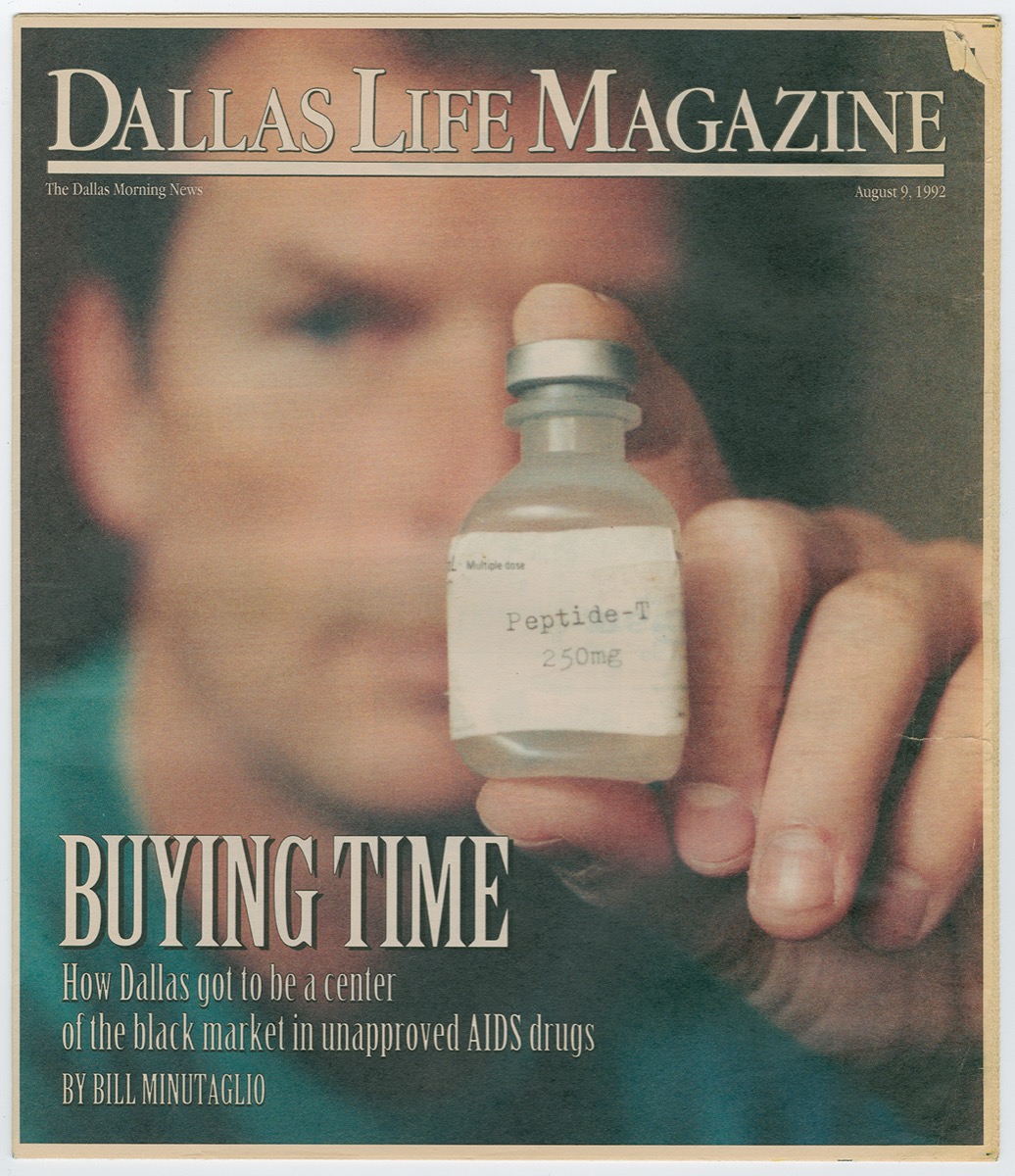AZT
Zidovudine (AZT) became the first FDA approved drug to treat HIV/AIDS, in 1987. AZT was hastily tested as the AIDS epidemic grew, and many with the disease were desperate for anything that might offer them another year of life. AZT was initially administered in high doses, and was later found to be toxic, causing anemia and other side effects. Those taking the drug also became resistant to its beneficial effects, making it an effective treatment for only about a year.
DGA v. Parkland Hospital
In 1988, members of the Dallas Gay Alliance and Ronald Woodroof sued Parkland Hospital for discrimination against, and providing inadequate care to, AIDS patients. With only one full time doctor on staff, in the AIDS clinic, to administer medication to around 700 AIDS patients per month, many patients were put on wait lists for treatment. Seven patients, who had died while on a waiting list for AZT were listed as co-plaintiffs for the case. Judge John Marshall ruled in favor of the Dallas Gay Alliance, mandating that the hospital end its practice of wait listing patients eligible for treatment with AZT.
Dallas Buyer’s Club
Ronald Woodroof, a Dallas native, was diagnosed with HIV in 1986, and was not allowed to participate in the AZT drug trials. He began researching the disease, and found various drugs and other antivirals were available in other countries, which had not been approved by the FDA for distribution in the U.S. Because of the long wait time for drug approvals, and the short life expectancy after being diagnosed with HIV, Woodroof decided to take action by creating the Dallas Buyer’s Club, in 1988. Though AZT was approved as the sole treatment of HIV by then, there were many who could not afford the medication or worried about AZT’s long-term effectiveness because HIV quickly became resistant to AZT. The Dallas Buyer’s Club provided imported and smuggled experimental treatments to those with HIV/AIDS, which had little evidence showing they were effective against the disease.
After Ron Woodroof’s death in 1992, the Dallas Buyer’s Club continued under new management and a new name, Dallas Buyer’s Club Alternatives.
In 1996, a new method of treatment was developed and approved for the treatment of HIV/AIDS, known as highly-active antiretroviral therapy (HAART). HAART utilizes small doses of AZT along with other drugs that hamper HIV’s resistance to AZT. This method of treatment has allowed people to live with this disease in a way that is manageable, but the estimated lifetime cost of this treatment, according to the CDC, is $379,668 (in 2010 dollars).


